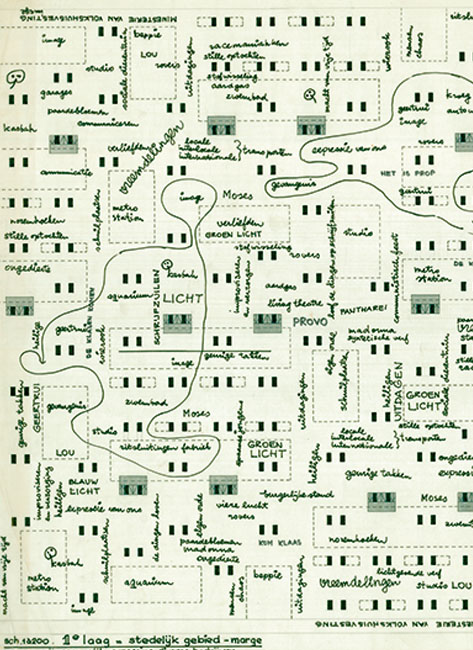De huiselijke superstructuren van Piet Blom
Samenvatting
Gedurende de geschiedenis van de moderne architectuur is het grootschalige stedelijke project meerdere malen dood verklaard, en niet door de minste denkers. Peter Smithson beweerde bijvoorbeeld al in 1962 dat het ‘grote gebouw als metafoor voor de gehele stad’ een vergissing was.1 Reyner Banham schreef in 1976 in zijn beroemde boek Megastructure dat het concept van de megastructuur ‘zelfdestructief’ was en dat het had ‘bewezen een zichzelf opheffend concept te zijn’.2 Toch zijn we, met de jaren nul van de eenentwintigste eeuw achter de rug, niet alleen getuige van de voortdurende herleving van de jaren 1960, maar zien we dat dergelijke projecten zowaar weer worden gebouwd. De over het landschap van Shenzhen ‘zwevende’ Horizontal Skyscraper van Steven Holl kan bijvoorbeeld gemakkelijk worden aangezien voor een late variant op de ‘willekeurige esthetiek’ die Alison en Peter Smithson lanceerden in antwoord op de nieuwe ‘patronen van groei en verandering’, en waarvan hun Golden Lane-project uit 1953 het bekendste voorbeeld vormt. Toch blijkt het grootschalige project niet alleen in de bloeiende Aziatische economieën als de weg vooruit te worden beschouwd. Ook in Europese steden worden kleinere en grotere nakomelingen van die superstructuren, megastructuren, Grossformen, clusters, mat-buildings en kashba’s gebouwd, ondanks de populistische vraag naar neotraditionalistische stadsgezichten. Denk aan het ontwerp van OMA voor het stadskantoor van Rotterdam, Jürgen Mayer’s Metropol Parasol voor Sevilla, de labyrintische interieurs van SANAA of om het even welk project van MVRDV. Zelfs in een historische stad als Amsterdam is een reeks aan grootschalige projecten te vinden die niets anders dan vermomde superstructuren lijken te zijn. Dit zijn meestal binnenstedelijke projecten, zoals het Funenpark van Frits van Dongen of, als een vroeg voorbeeld, het ontwerp van Kees Christiaanse voor het GWL-terrein. Ook het stedenbouwkundig plan van Sjoerd Soeters voor het Java-eiland, uitgedost met hedendaagse grachtenpanden, is typologisch gezien een modernistisch superblok op eindeloze ondergrondse parkeergarages, in één keer door één bouwconsortium neergezet – zij het in een taal die veel beter past bij de smaak van de Nederlandse middenklasse dan bijvoorbeeld de monumentale woningbouw van de Bijlmer uit de jaren 1970.



